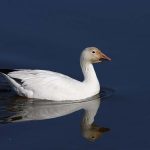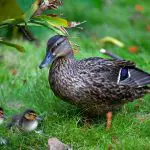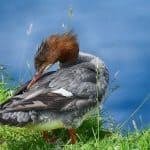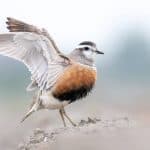Common Name: Short-billed Dowitcher
Scientific Name: (Limnodromus griseus)| Size | Diet | Range in Hawaii | Status in Hawaii |
|---|---|---|---|
| 9 in. - 11 in. | insects, worms, crustaceans, and mollusks | Kaua'i, O'ahu, Moloka'i, and Maui | Least Concern |
The Short-billed Dowitcher, also known as Limnodromus griseus, is a medium-sized shorebird species that is native to North America. While the species is not native to Hawaii, it has been known to occasionally visit the islands as a nonbreeding visitor and vagrant. With its unique appearance and distinctive behavior, the Short-billed Dowitcher is a fascinating bird species that has captured the attention of birdwatchers and avian enthusiasts around the world.
In this article, we will explore the world of the Short-billed Dowitcher, its unique characteristics, and its occasional presence in Hawaii.
Short-billed Dowitcher
Appearance
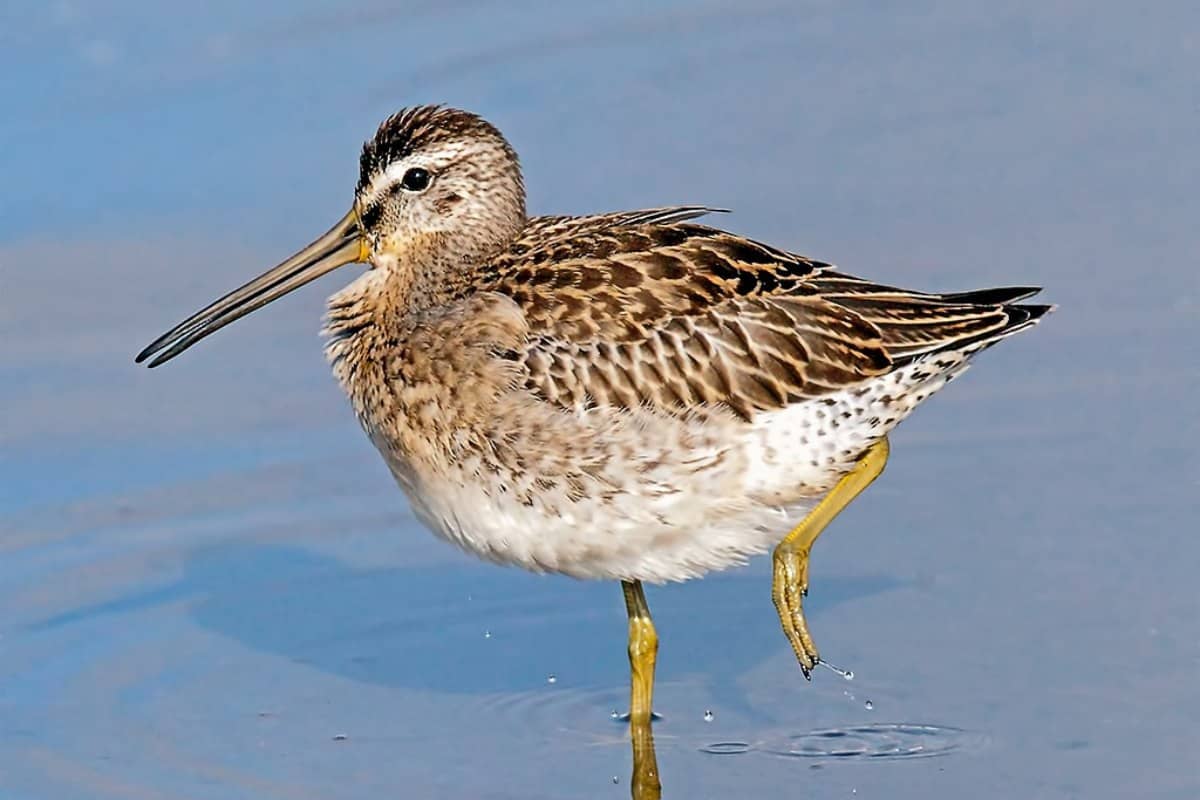
The Short-billed Dowitcher is a striking shorebird known for its distinctive appearance. This medium-sized bird measures about 9 to 11 inches (23 to 28 centimeters) in length. Its plumage varies with the seasons, but during the breeding season, it boasts a rich chestnut hue on its neck and underparts. Its upperparts are mottled brown, offering excellent camouflage in its wetland habitats.
One of the key features that sets the Short-billed Dowitcher apart is its relatively short bill, which is straight and slender. During the non-breeding season, its plumage transitions to a more subdued grayish-brown, making it adaptable to different environments. In flight, Short-billed Dowitchers reveal a striking white stripe down their backs, contrasting with their darker wings.
Diet
The Short-billed Dowitcher has a fascinating and diverse diet that reflects its adaptability as a shorebird. These waders are expert foragers, primarily feeding on small invertebrates. Their menu includes a variety of aquatic and terrestrial creatures, such as insects, worms, crustaceans, and mollusks.
Nesting
Their nests are simple and discreet, typically consisting of a shallow depression in the ground, lined with a sparse layer of grasses, mosses, and leaves. These nests are well-hidden amidst the grasses and low vegetation, providing both camouflage and protection from predators.
What makes the Short-billed Dowitcher’s nesting strategy truly fascinating is its impeccable timing. They arrive at their breeding grounds just as the Arctic summer is beginning, taking advantage of the brief window of time when the tundra is free of snow and the insect population is booming. This allows them to feast on insects and build up their energy reserves for the upcoming migration.
Once their chicks hatch, these devoted parents guide their young on a remarkable journey, teaching them essential survival skills and leading them to the wetlands where they’ll find their own food.
Behavior
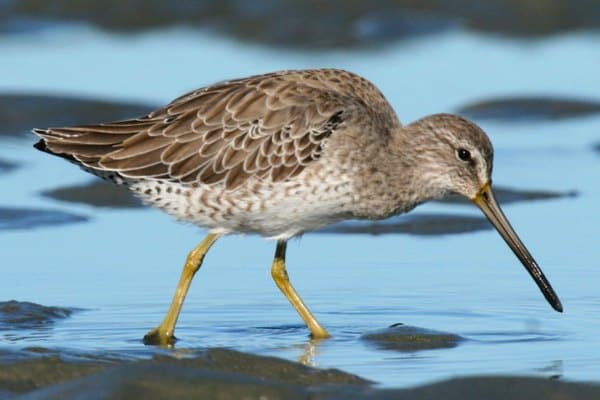
One of their most remarkable behaviors is their feeding strategy. Short-billed Dowitchers use their specialized, shorter bills to probe mud and sand for small invertebrates like insects, worms, and crustaceans.
With rhythmic, rapid motions, they tap their bills into the substrate, detecting hidden prey by touch and taste. It’s a fascinating display of precision and efficiency as they expertly extract their meals from the muck.
During migration, these birds embark on impressive journeys, traveling thousands of miles between their breeding grounds in the Arctic tundra and their wintering destinations in places like South America. Their synchronized, long-distance flights are a marvel of nature’s navigation, and their arrival at wetlands along the way is a spectacle for birdwatchers.
In addition to their feeding and migratory behaviors, Short-billed Dowitchers also exhibit interesting courtship rituals, involving aerial displays and vocalizations.
Habitat
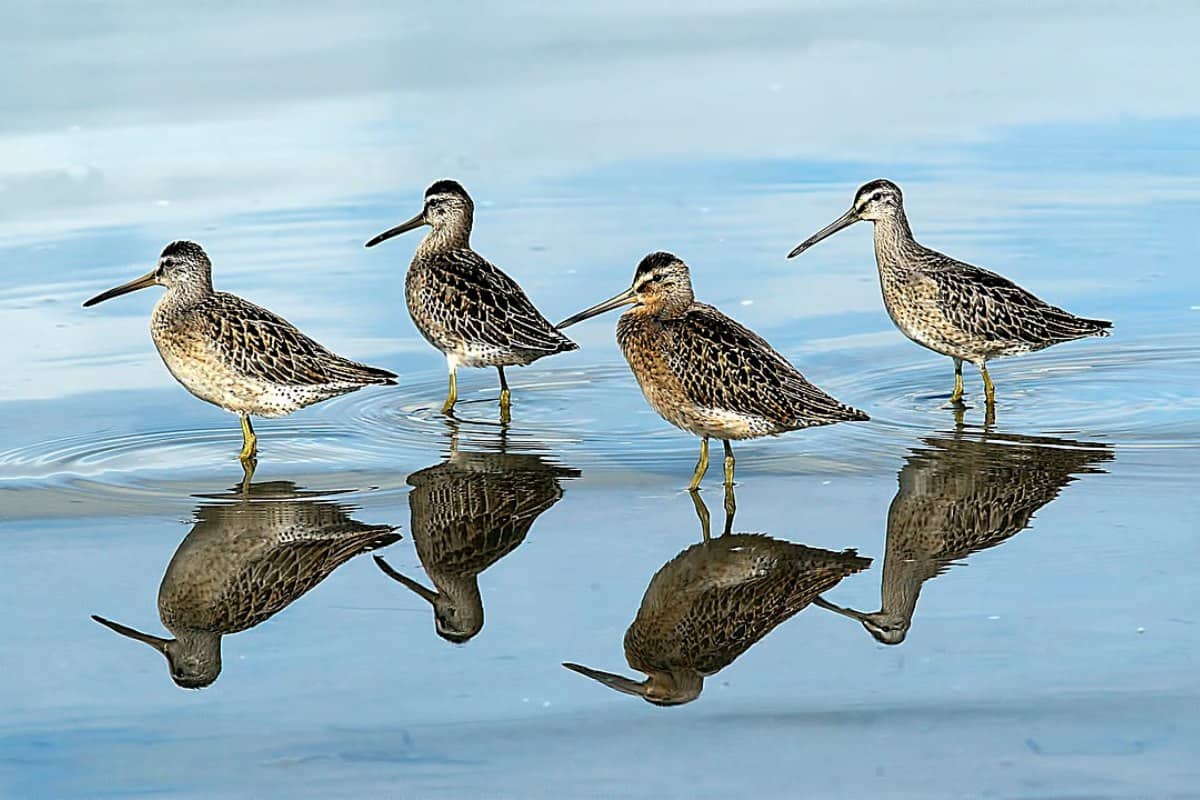
Short-billed Dowitchers are adaptable birds, found in various habitats throughout their annual cycle. They breed in remote Arctic tundra wetlands in northern Canada and northwest Alaska. During migration, they inhabit coastal mudflats, estuaries, and sandy beaches.
In the winter, they seek refuge in warm coastal lagoons and wetlands in the southern United States, Central America, and South America. This dynamic habitat range reflects their remarkable ability to thrive in diverse environments.
Range
Short-billed Dowitchers, typically nonbreeding visitors and occasional vagrants, have been observed in specific Hawaiian islands. They are confirmed to have appeared in the Northwestern Hawaiian Islands, including Kure, Midway, and Laysan, with a total of five records.
In the Southeastern Hawaiian Islands, they have been recorded primarily on Kaua’i, O’ahu, Moloka’i, and Maui, totaling ten confirmed records. These unique sightings are mostly of first-cycle individuals, adding a touch of rarity to these island landscapes.
Conservation Status
The Short-billed Dowitcher enjoys a relatively stable conservation status, currently listed as a species of “Least Concern” on the International Union for Conservation of Nature (IUCN) Red List. This classification suggests that their populations are generally healthy and not currently facing imminent threats.
Interesting Facts
1. Dowitcher duo
Short-billed Dowitchers and Long-billed Dowitchers are often found together, and they can be challenging to distinguish, even for experienced birdwatchers. They rely on subtle differences in bill length and other characteristics for identification.
2. Wetland wonders
They are often considered an indicator species for the health of wetland ecosystems. The presence of Short-billed Dowitchers can signal the ecological richness and vitality of these critical habitats.
3. Flock dynamics
These birds are often seen foraging and migrating in large flocks. Their coordinated movements and synchronized flights are awe-inspiring sights during migration seasons.
4. Interspecies hybridization
Short-billed Dowitchers have been known to hybridize with Long-billed Dowitchers where their ranges overlap. The resulting hybrids can pose identification challenges due to a mix of characteristics from both species.
5. Critical resting sites
During migration, they rely on specific stopover sites to rest and refuel. Loss or degradation of these vital stopover areas can have detrimental effects on their overall migration success.
Frequently Asked Questions
1. Why are they called “dowitchers”?
The name “dowitcher” is believed to be an imitation of one of their calls. It is said to resemble a “dow-it” sound, which contributed to their common name.
2. What is the best time to observe Short-billed Dowitchers during migration?
The best times to observe them during migration are typically spring and fall when they are passing through various stopover sites. The exact timing can vary depending on their location along their migration route.
3. What is the average lifespan of a Short-billed Dowitcher?
In the wild, their lifespan can vary, but some individuals have been recorded living up to 15 years. Survival rates can be influenced by factors like habitat quality and predation.
4. Do Short-billed Dowitchers have any cultural significance or symbolism?
In some indigenous cultures, shorebirds like dowitchers have cultural significance and may be featured in folklore, art, or traditional stories.
5. How can I contribute to the conservation of Short-billed Dowitchers?
You can support their conservation by participating in citizen science programs, supporting wetland preservation initiatives, and advocating for responsible land and water use practices that protect their habitats.

